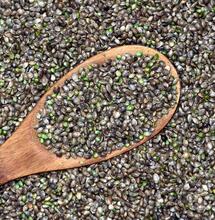Cannabis is a Factory for Health

Regarding the medical uses of the Cannabis plant, research continues into the mechanism that Cannabis uses for its healing properties.
Regarding the medical uses of the Cannabis plant, research continues into the mechanism that Cannabis uses for its healing properties.
|
A page from a version of Shennong Bencao Jing (Shen-nung Pen-tsao Ching) [Credit: WikiMedia Commons/Pancrat] |
Advances in scientific research have allowed mankind to explain the reason that Cannabis is able to offer the effects that it does (i.e., the endocannabinoid system). Thus, Cannabis has also opened new areas of scientific exploration into the mechanisms that operate within the human body.
All parts of the Cannabis plant have been used as medicine. The flowers were listed as the remedy for 120 illnesses, or feng ('evil winds'), which can enter the body and cause disease, according to the ancient medical texts of China. The great Emperor Shen Nong (Shennong, Shen Nung) encouraged the people to cultivate the plant for medicine in the twenty-eighth century B.C.E.. The name of Cannabis in Chinese is Ta Ma, which translates to 'great numbness'. Cannabis flowers were used as an anesthetic during painful operations and procedures before the invention of chemical anesthetics. It has been recommended to cultivate Cannabis plants for medicine and industry in all known great civilizations.
The early forefathers of the United States knew of Cannabis and cultivated it without hesitation. George Washington and Thomas Jefferson grew hemp for medicine and also for cloth and rope. Parts of the Cannabis plant are included in American prescription records that were written by physicians in the early twentieth century. Records show that sixty percent of prescriptions written between 1900 and 1920 contained Cannabis or Cannabis tincture; prescriptions for pain were common. Headache pain was often treated with a combination of Cannabis and opium or laudanum.
|
A Chinese medical talisman for menstrual problems; Cannabis was frequently employed [Credit: WikiMedia Commons/Wellcome Images] |
Cannabis Treats Menstrual Issues
Menstrual pain and irregularity were also shown to benefit from Cannabis medicines. The use of Cannabis in the treatment of menstrual symptoms is common in Chinese medical texts and Latin American folklore. Cannabis flowers are known to be an emmenagogue, meaning that it stimulates the flow of blood and promotes nervous stimulation to the pelvic area. This action helps to moderate the contractions that occur during a woman's monthly cycle. The action of stimulating the flow of blood and energy to the pelvis is also helpful when expelling a retained placenta after birth and for postpartum hemorrhage. Increasing blood and nervous system circulation also gives credence to the reputation of Cannabis as a feminine aphrodisiac. Cannabis has been shown to be helpful for the symptoms of postpartum depression and PMS (premenstrual syndrome), as well as PMDD (premenstrual dysphoric disorder).
Cannabis as a Diuretic
When taken internally, the juice made from pressing the fresh stalk or root functions as a diuretic to promote the flow of water and urine from the body. When Cannabis is combined with other herbs, this property contributes to its value in the removal of stones from the kidney. The skin or bark of the plant has the same diuretic action. The juice pressed from the leaves is poisonous to insects and parasites; Cannabis leaf juice is an anthelmintic and is taken internally for the treatment of worm or parasitic infestation in the intestines. The leaves are juiced and consumed in the same manner as wheat grass.
|
Cannabis leaves can be used to treat parasitic infections |
Antispasmodic Properties of Cannabis
Cannabis has a long history in its use as an antispasmodic agent. Recent scientific advancement has shown that this action is due to cannabidiol (CBD). Science has proven that CBD modulates the activity of both CB1 and CB2 receptor sites. These receptor sites are built into the human nervous system for endocannabinoids, an array of chemical compounds in the cannabinoid family that are now known to be produced internally. Cannabis is effective for the spasms of epilepsy. Some body aches and pains are due to spastic muscle constriction of the nerves that radiate from the spine. Cannabidiol is also effective for the pains associated with muscle spasm.
Antibiotic and Anti-Inflammatory Properties of Cannabis Seeds
The seeds are consumed internally and externally are used as a paste. Cannabis seed paste has antibiotic and anti-inflammatory properties. The hulled seeds or seed 'hearts' are crushed, mixed with water, and cooked as porridge. When consumed, this remedy can treat vomiting and constipation. Seed hearts have been regarded as a tonic in Traditional Chinese Medicine. A Chinese Materia Medica written by G.A. Stuart, MD in 1917 states that, "continued use makes the flesh firm and prevents old age." These white kernels are nutritious and full of beneficial essential fatty acids. Cannabis seed oil is said to prevent hair from falling out when regularly applied to the scalp. Hemp seed oil contains vitamin E, which helps Cannabis seed oil to moisturize and condition the scalp.
|
Hulled hemp seeds are consumed for their antibiotic and anti-inflammatory properties [Credit: WikiMedia Commons/ElinorD] |
Protein and EFA Content of Hemp Seed Oil
Cannabis seed oil contains up to twenty-five percent protein. Protein acts as an emollient, adding moisture to and strengthening the hair fiber. Hemp seed oil is also high in Omega-3 fatty acids, a rarity amongst plant oils. Flax seed oil contains, Omega-3, but this must be converted by the enzyme Delta-6-Desaturase (D6D) into EPA and DHA, the essential fatty acids our bodies require. These fatty acids are termed essential because our bodies are not able to manufacture them. The amount of D6D produced by the body declines with age. Cannabis or hemp seed oil is one of the richest sources of EPA and DHA found in nature, which do not need to be converted for the body to use.
Hemp seed oil has a near perfect ration of Omega-3 to Omega-6 fatty acids. GLA is an Omega-6 essential fatty acid that is also difficult to find in the plant kingdom but is present in Hemp seed oil. GLA reduces inflammation and is used by the body to balance neurological and hormonal processes. This action allows the seed oil to reduce pain and inflammation of the nerves and the hormonal difficulties women experience with PMS, amongst other healthful corrective actions.
Externally, the paste is applied to blisters, sores and wounds that will not heal. Hemorrhoids can be treated with this paste to reduce bleeding and inflammation.
Cannabinoids as Medicine
The Cannabis plant is a natural factory of cannabinoids, compounds that aid the health and well-being of mankind. After decades of persecution, this plant is being recognized for the benefits it holds, and in the process is leading mankind into a better understanding of how the human body operates.



